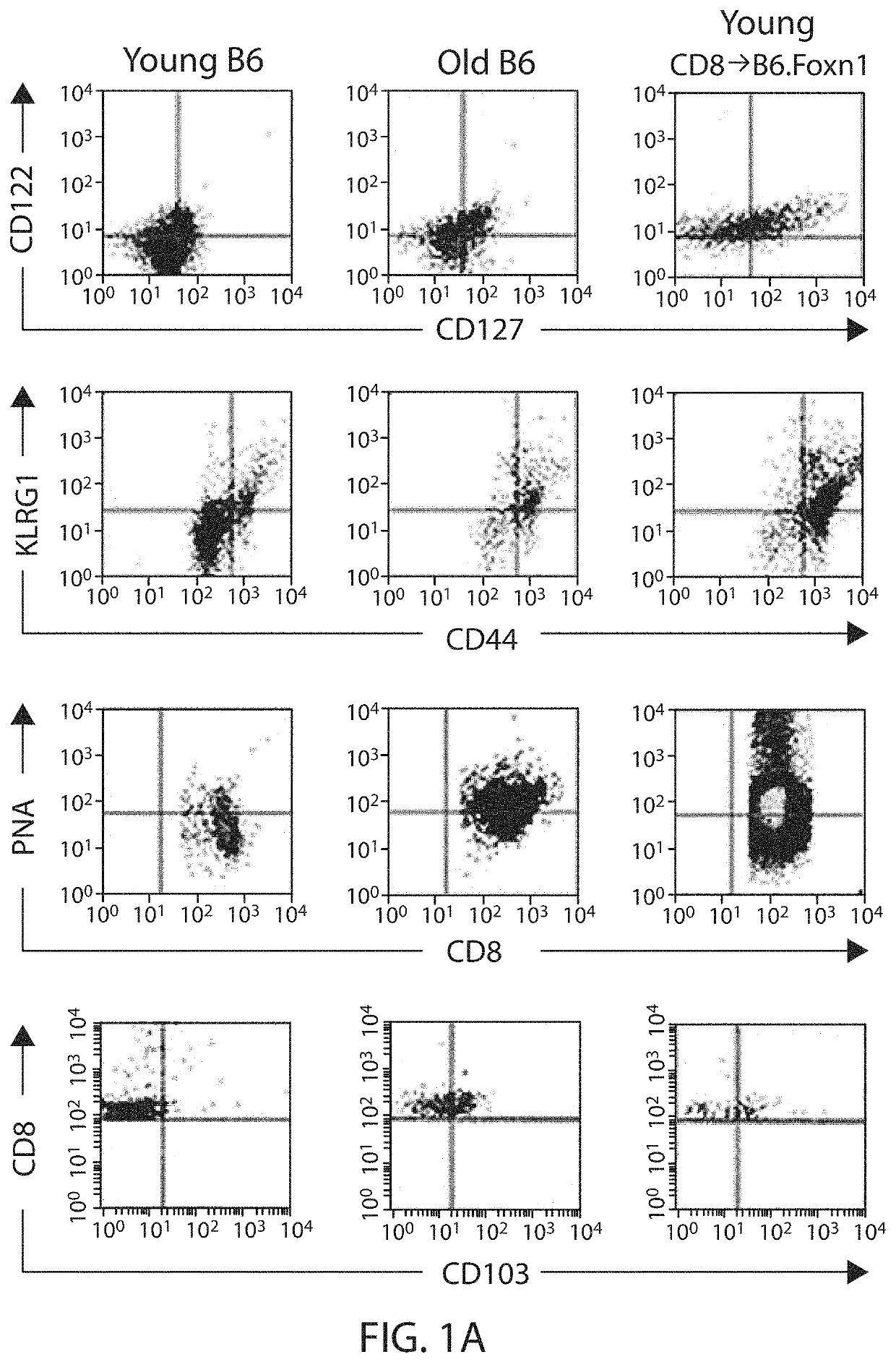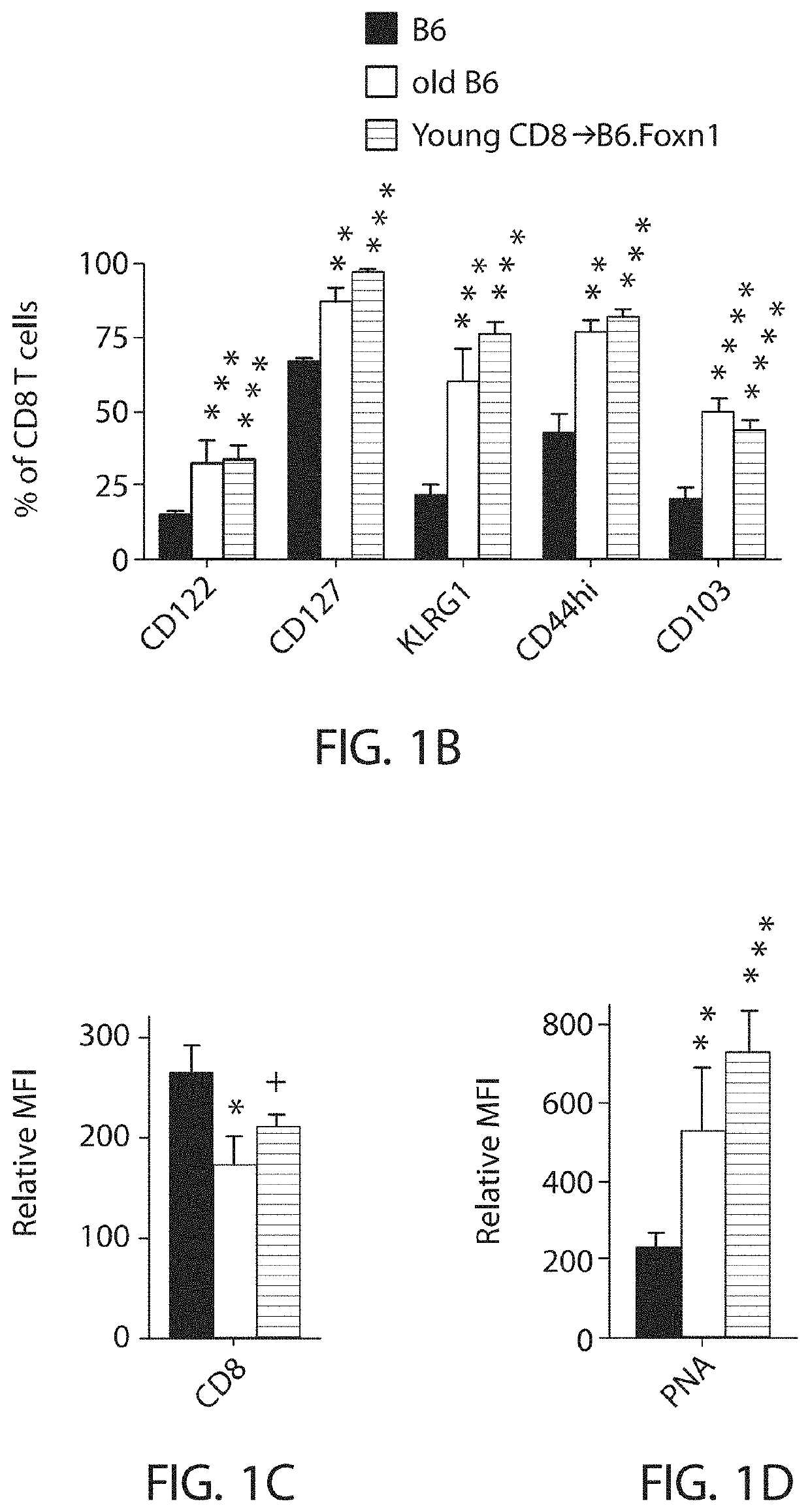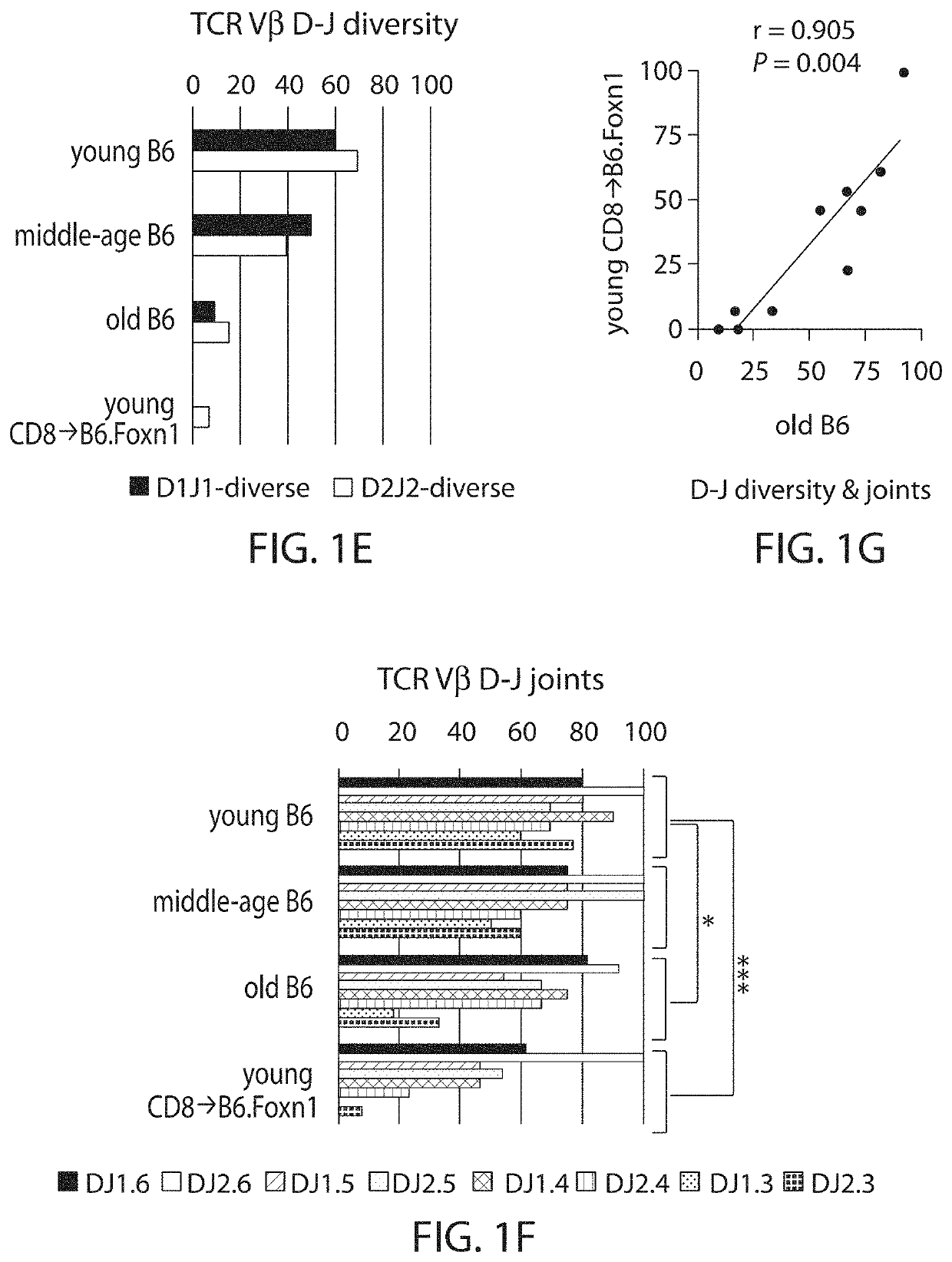Methods and systems for identification and treatment of pathological neurodegeneration and age-related cognitive decline
a neurodegeneration and age-related technology, applied in the direction of peptides, drug compositions, integrin superfamily, etc., can solve the problems of cd8+ t cells that can acquire self-destructive potential, difficult to study the pathological involvement in aberrant t cell expansion in lieu of the natural aging process, and difficulty in testing this, so as to reduce the level of cd103-positiv
- Summary
- Abstract
- Description
- Claims
- Application Information
AI Technical Summary
Benefits of technology
Problems solved by technology
Method used
Image
Examples
example 1
Resident Memory CD8+ T Cells Mediate Pathological Neurodegeneration and Age-Related Cognitive Decline
[0079]CD8+ T cell homeostatic expansion is a function of low T cell numbers, and occurs not only gradually with age, but rapidly upon injection into young T cell-deficient hosts (20, 21). This inducible phenomenon could allow unambiguous testing of the role of abnormal CD8+ T cells in diseases such as Alzheimer's disease, provided its relevance to age-related CD8+ T cell dysfunction is established. It was determined that spontaneous homeostatic induction by injection into nude mice uniformly induced CD8+ T (“hiT”) cells that exhibit molecular, phenotypic, and functional abnormalities indistinguishable from those in affected aged mice. These hiT cells localized to brain, where they ultimately promoted Alzheimer's disease-like neurodegenerative pathology, including prominent disease features missing from FAD-mutant transgenic animals. hiT cell-associated metrics were also increased in ...
example 2
Operating Procedure for HLA-Peptide Antigen Multimer Staining for Flow Cytometry
[0141]Principle
[0142]The procedure describes a method used to determine the percentage of CD8+ T cells, T hybridoma cells, or cultured T cells staining positively with MHC I-tumor antigen tetramers. Whole blood or PBMC from human subjects, T hybridoma cells or cultured T cells are aliquoted into U-bottom 96 well microtiter plates, followed by staining with monoclonal antibodies (mAbs). These mAbs, anti-CD8, and anti-KLRG1 or anti-CD103, recognize cell surface markers on a subpopulation of aged T cells. Cells are then stained with pHLA multimers, which recognize antigen-specific receptors on T cells. After incubation, the cells are washed to eliminate the unbound reagents, and they are analyzed using flow cytometry. The percentage of PBMC binding tumor antigen tetramers is determined using the percentage of cells that fall into electronic gates that are defined by control stains.
[0143]Specific Requirement...
PUM
| Property | Measurement | Unit |
|---|---|---|
| Time | aaaaa | aaaaa |
| Reduction potential | aaaaa | aaaaa |
Abstract
Description
Claims
Application Information
 Login to View More
Login to View More - R&D
- Intellectual Property
- Life Sciences
- Materials
- Tech Scout
- Unparalleled Data Quality
- Higher Quality Content
- 60% Fewer Hallucinations
Browse by: Latest US Patents, China's latest patents, Technical Efficacy Thesaurus, Application Domain, Technology Topic, Popular Technical Reports.
© 2025 PatSnap. All rights reserved.Legal|Privacy policy|Modern Slavery Act Transparency Statement|Sitemap|About US| Contact US: help@patsnap.com



